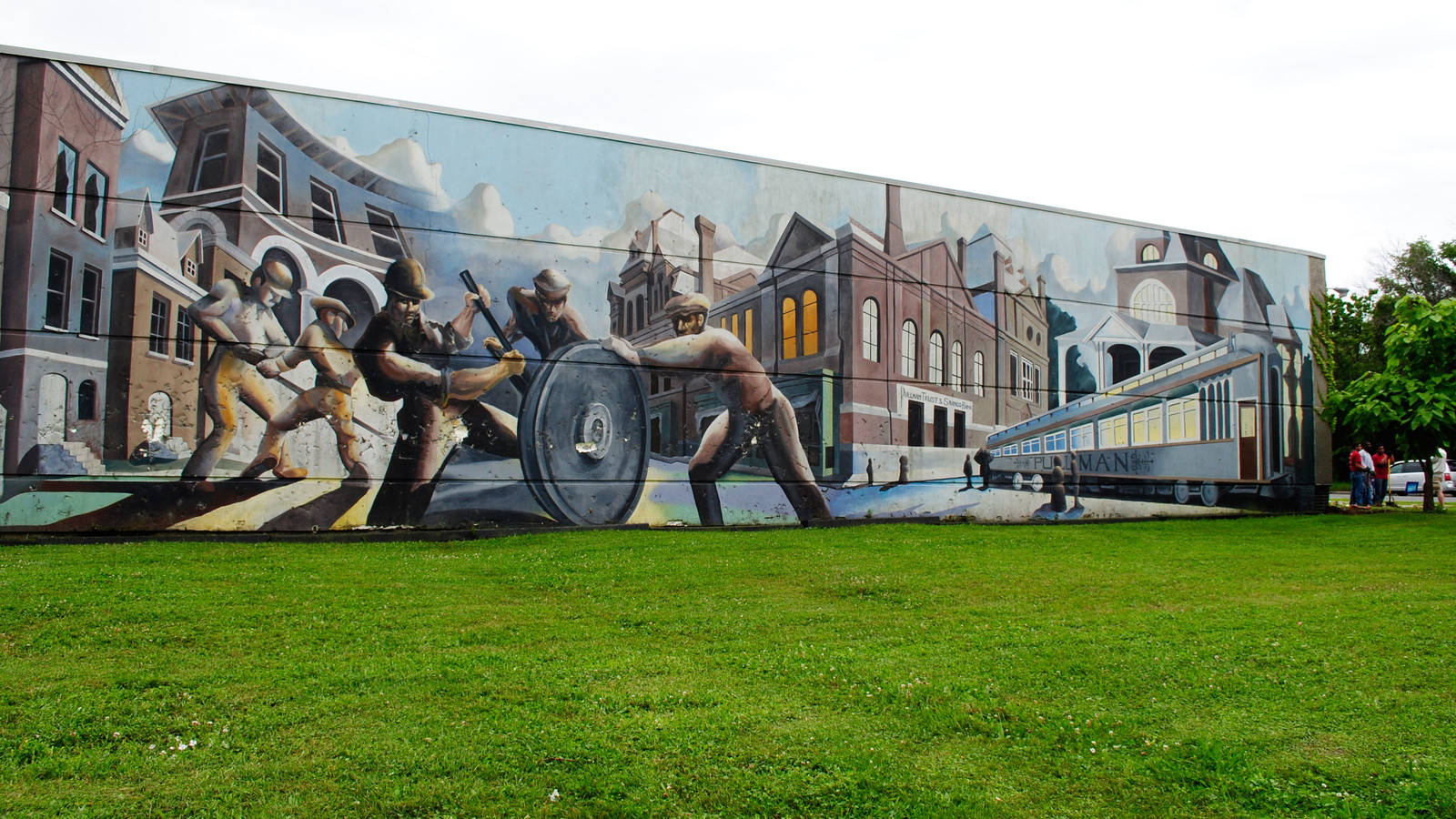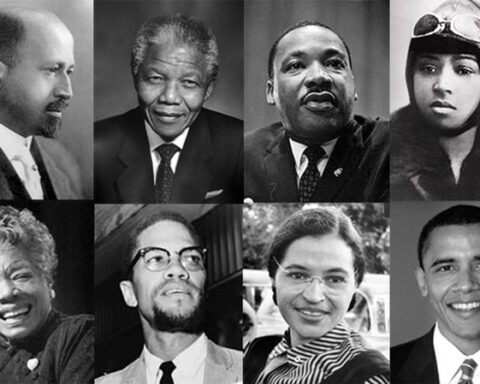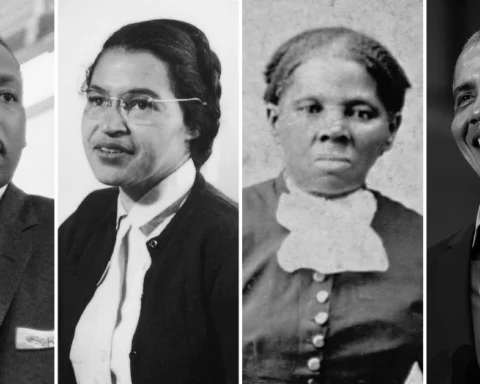Courtesy of NPCA,
National parks preserve the legacies of visionaries such as Martin Luther King Jr., Harriet Tubman, Frederick Douglass and Booker T. Washington, as well as landmark sites in the struggle for equality, including the Brown v. Board of Education and Little Rock Central High School National Historic Sites and dozens of Civil War battlefields where soldiers fought and died to end slavery and preserve the union.
Yet many other lesser-known parks share compelling and unexpected stories. Here are seven fascinating but less obvious places to learn about Black history.
Note that many of these sites are temporarily closed or partially closed due to the pandemic, though all offer more information and historic context online.
1. Port Chicago Naval Magazine National Memorial, California
The worst homeland disaster of World War II happened on a dock not far from San Francisco. Thousands of African American sailors served at Port Chicago in segregated units during the war with limited job roles; one of these roles was loading weapons and ammunition into ships. The work was extremely tedious and dangerous, and the sailors received little training. One July evening in 1944, more than 5,000 tons of munitions exploded, killing 320 men and injuring hundreds of others. Two weeks later, when sailors were ordered to return to the same dangerous conditions, 258 men refused and 50 were court-martialed and found guilty of mutiny. This terrible tragedy ultimately led to the desegregation of the U.S. Navy and, subsequently, all U.S. armed forces, inspiring many people to become part of the civil rights movement. To date, the U.S. Navy has refused to overturn the court-martial of the 50 soldiers, though families and some members of Congress continue to pursue reversals. (Note: The memorial is on an active military base and currently closed due to the pandemic. When open, reservations are required at least two weeks in advance to visit.)
2. Nicodemus National Historic Site, Kansas
The era of American pioneers conjures images of white families in horse-drawn carts making long journeys across the Midwest. However, in 1877, seven men from Kentucky — most of them formerly enslaved — set out to create the first all-Black settlement on the Great Plains, inspiring African American families to travel west. Many of these pioneers viewed Kansas as a “promised land” and a way to escape the discrimination, racial violence and poor living conditions of the South following the Civil War. Conditions were difficult, however, and many of the early settlers quickly left; others lived in sod houses or holes in the ground and suffered without enough food until a second wave of settlers brought horses, plows and other resources several years later. In its heyday, roughly 600 people lived in Nicodemus, though the population declined in the 1900s and only about 60 people live there today. The site is the last African American settlement west of the Mississippi River, and a walking tour through town traces different aspects of pioneer life in the late 1800s. The park also offers an excellent library with helpful resources for tracing area ancestry and hosts homecoming events for descendants of residents (though the visitor center is temporarily closed).
3. Tuskegee Airmen National Historic Site, Alabama
More than 80 years ago, African Americans were barred from flying in the U.S. military. But in 1941, under pressure from civil rights organizations and members of the Black press, the Army Air Corps launched a “Tuskegee Aviation Experience” to train African Americans to fly and maintain combat aircraft during World War II. The program, which took place at the distinguished Tuskegee Institute, trained more than 1,000 Black pilots, navigators, bombardiers, instructors and other associated personnel. These men flew more than 1,500 missions during the war and won more than 850 medals, defying prevailing stereotypes and opening African Americans to more opportunities in the military. Although they were not trained as pilots, Black women also participated in the program and became mechanics, technicians, control tower operators and other specialized staff. The national historic site, though temporarily closed due to the pandemic, contains a restored hanger and a museum, which includes a replica of a red-tail plane the airmen were known for piloting.
4. Fort Davis National Historic Site, Texas
5. New Orleans Jazz National Historical Park, Louisiana
An entire park site devoted to jazz, right in the heart of the French Quarter, where even the park rangers serenade you? It’s a dream come true for music lovers who want to learn more about this distinctly American art form fused from the roots of the blues, swing, ragtime and gospel traditions. Though relatively few national park sites are devoted to the arts, visitors to New Orleans can learn about pivotal figures such as Louis Armstrong and Jelly Roll Morton and enjoy live performances and ranger-led educational programs five days a week (when open; the park is temporarily closed due to the pandemic). The park’s four main sites include a jazz museum and a performing arts center at the Old U.S. Mint building, a National Historic Landmark in the French Quarter.
6. Pullman National Monument, Illinois
Few sites preserve the history of American industry, labor and urban planning as well as Pullman. Industrialist George Pullman launched the Pullman Palace Car Company on Chicago’s South Side in the 1880s to manufacture rail cars, creating a company town with shops, schools and a church. In the early 20th century, the Pullman Company was the nation’s largest employer of African Americans. After decades of unfair and abusive labor practices, A. Philip Randolph organized the Brotherhood of Sleeping Car Porters at the Pullman Company — the first African American labor union to secure bargaining rights. In 1894, after George Pullman cut wages without reducing rent, employees launched a strike that spread across the railroad industry, interrupting national rail and mail service and inspiring a nationwide dialogue on workers’ rights. Later that year, Congress unanimously created Labor Day as a national holiday. Pullman porters were instrumental in the rise of the Black middle class in America. NPCA and our supporters and allies were instrumental in preserving the site, where most of the original buildings from the planned industrial town still stand, as part of the National Park System.
7. Biscayne National Park, Florida
This landmark marine park is preserved today thanks in large part to the Jones family of Porgy Key. The family initially purchased Porgy Key for $300 in 1897, where they lived and grew vegetables and fruits, including a flourishing business in limes and pineapples. The last surviving member of the Jones family, Lancelot, spent his whole life on the island and eventually became known as the “Sage of Porgy Key,” sharing his naturalist wisdom with visitors and schoolchildren, particularly his love of sea sponges. In the 1960s, developers eyed the pristine islands with plans to build high-rise apartments and shopping centers. Jones not only refused to sell his family’s land, he helped form a counter-movement against the development — and the plans were eventually defeated. Jones later sold his island paradise to the National Park Service where it is now preserved in a similar condition to how his family experienced it.







